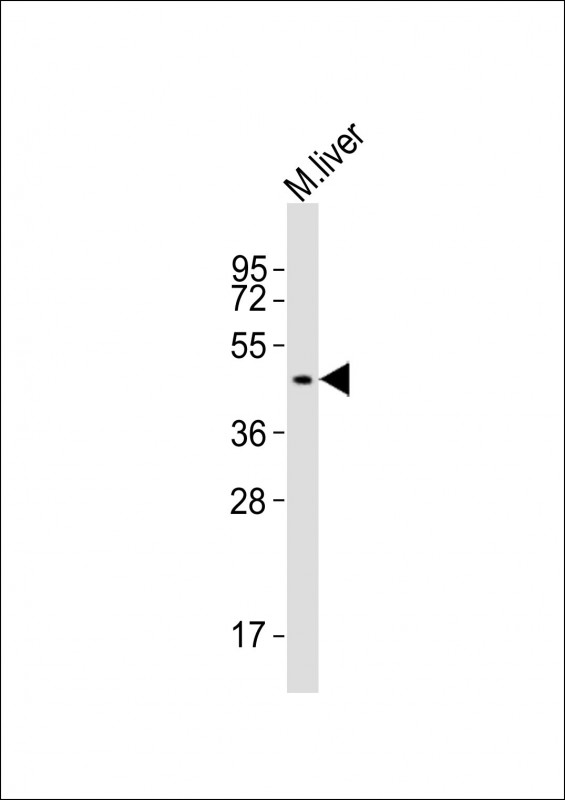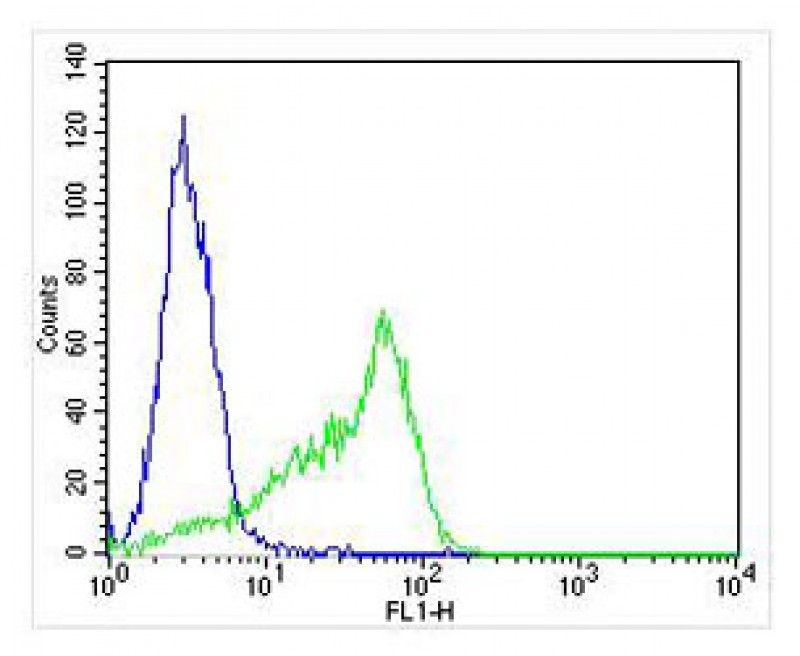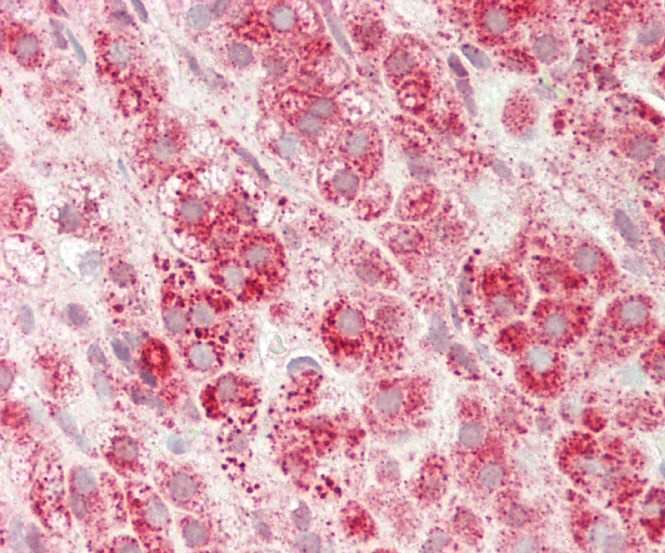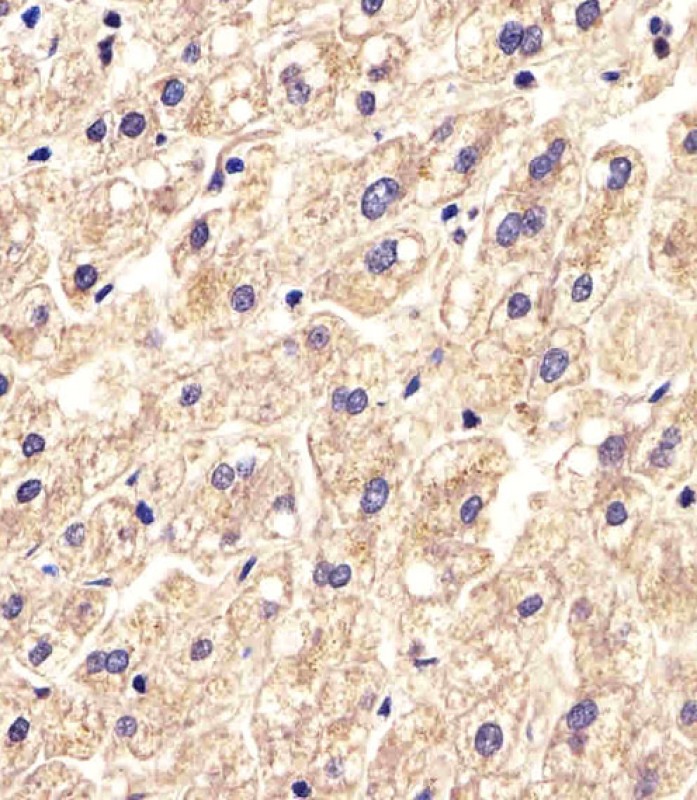




| WB | 1/500-1/1000 | Human,Mouse,Rat |
| IF | 咨询技术 | Human,Mouse,Rat |
| IHC | 1/100-1/500 | Human,Mouse,Rat |
| ICC | 技术咨询 | Human,Mouse,Rat |
| FCM | 1/25 | Human,Mouse,Rat |
| Elisa | 咨询技术 | Human,Mouse,Rat |
| Aliases | Monocarboxylate transporter 11, MCT 11, Solute carrier family 16 member 11, SLC16A11, MCT11 |
| Entrez GeneID | 162515 |
| WB Predicted band size | 47.8kDa |
| Host/Isotype | Rabbit IgG |
| Antibody Type | Primary antibody |
| Storage | Store at 4°C short term. Aliquot and store at -20°C long term. Avoid freeze/thaw cycles. |
| Species Reactivity | Human, Mouse |
| Immunogen | This SLC16A11 antibody is generated from rabbits immunized with a KLH conjugated synthetic peptide between 48-76 amino acids from the N-terminal region of human SLC16A11. |
| Formulation | Purified antibody in PBS with 0.05% sodium azide. |
+ +
以下是3篇与 **SLC16A11 (N-term)抗体** 相关的参考文献,包含文献名称、作者及摘要核心内容:
---
1. **文献名称**: *SLC16A11 variant reduces risk of type 2 diabetes in Mexican populations*
**作者**: Williams AL, et al.
**摘要**: 研究通过全基因组关联分析(GWAS)发现SLC16A11基因变异与2型糖尿病风险相关。文中使用针对SLC16A11 N端的抗体进行Western blot实验,验证了该蛋白在肝脏和胰腺中的表达,并发现风险等位基因携带者的SLC16A11蛋白水平显著降低。
---
2. **文献名称**: *Functional characterization of SLC16A11 in hepatic lipid metabolism*
**作者**: Rusu V, et al.
**摘要**: 研究利用SLC16A11 N端特异性抗体进行免疫荧光和免疫沉淀实验,发现SLC16A11定位于肝细胞线粒体内膜,并调控甘油三酯的转运。基因敲除实验显示,SLC16A11缺失会加剧肝脏脂质积累,提示其在代谢疾病中的作用。
---
3. **文献名称**: *Antibody validation and tissue localization of SLC16A11 across mammalian species*
**作者**: Lee C, et al.
**摘要**: 本文系统验证了SLC16A11抗体的特异性,通过N端抗体在人类、小鼠和猕猴组织中的免疫组化分析,证实该蛋白在肾脏、肝脏及胰岛β细胞中广泛分布,并强调抗体在跨物种研究中的适用性。
---
若需要具体文献链接或补充信息,可进一步提供数据库(如PubMed ID)检索帮助。
×